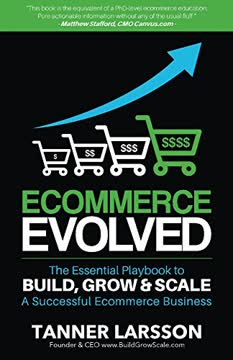Key Takeaways
1. Evolve Beyond the Storefront: Embrace Funnel-Based Ecommerce
You should never spend any customer acquisition marketing efforts or dollars on sending visitors to your online store.
Funnel-Based Approach. Traditional ecommerce focuses on the storefront, but evolved ecommerce leverages sales funnels to guide customers through a structured buying process. This approach significantly increases conversion rates and average order values compared to simply directing traffic to a product catalog.
Stand-Alone vs. Upsell Funnels. There are two primary types of ecommerce funnels: stand-alone funnels, which bypass the storefront entirely and are used for external marketing, and upsell funnel paths, which are integrated into the existing store and activated after a purchase. Both types are essential for maximizing sales.
Buyer's High. Sales funnels capitalize on the "buyer's high," the dopamine rush customers experience after making a purchase. By offering order bumps, upsells, and downsells during this period of heightened receptivity, businesses can significantly increase their revenue per customer.
2. Recurring Income Core: The Foundation for Predictable Growth
Recurring income should be the focal point of your entire business.
Predictable Revenue. Recurring income provides a stable and predictable revenue stream, reducing the volatility often associated with ecommerce businesses. This stability allows for better financial planning and investment in growth initiatives.
Types of Recurring Income Cores (RICs). There are several types of RICs, including consumable subscriptions, subscription boxes, digital memberships, newsletters, buyer's clubs, and associations. Businesses should choose the RIC type that best aligns with their products and target market.
Retention is Key. Once customers are enrolled in a RIC, retention management becomes crucial. Strategies such as providing exceptional value, tracking churn rate, and addressing drop-off points can significantly increase customer lifetime value.
3. Profit-Driven Product Selection: Margin Matters Most
If you can’t get 150 percent markup on your product, consider choosing a more lucrative product.
The 3X Rule. A key principle in product pricing is the "3X Rule," which states that products should be marked up at least three times their production cost. This ensures sufficient profit margins to cover operating expenses and advertising costs.
Private Label vs. OEM. Businesses can sell their own branded products through private labeling (rebranding existing products) or original equipment manufacturing (OEM), which involves creating entirely new products. Private labeling is a good starting point, while OEM offers greater differentiation.
Product Selection Criteria. When selecting products, consider factors such as niche specificity, durability, quality, demand, retail price, margins, weight, and uniqueness. These criteria help ensure that products are profitable and appealing to the target market.
4. Conversion, Sales, and Profit: Maximize Every Opportunity
A basic ecommerce sales funnel boosts average order value by 20 percent.
Conversion Tricks. Conversion tricks, such as retargeting, product reviews, landing pages, and unique mobile checkouts, can significantly increase the percentage of website visitors who become paying customers. These tactics address common barriers to purchase and create a more compelling shopping experience.
Sales Boosts. Sales boosts, including loss leaders, tripwires, flash sales, and phone support, incentivize customers to buy both now and in the future. These tactics create a sense of urgency and value, driving sales volume and customer acquisition.
Profit Maximizers. Profit maximizers, such as free shipping, shipping and handling as a profit center, and ride-alongs, increase overall profits without requiring significant additional investment. These strategies optimize existing processes and create new revenue streams.
5. Know Thy Customer: Deep Dive into Demographics and Behavior
The reality is, your business is not unique.
Demographic Data. Understanding customer demographics, such as age, location, gender, income, and education, is essential for targeted marketing. This data helps businesses identify their ideal customer and tailor their messaging accordingly.
Social and Behavioral Data. Social and behavioral data, such as leisure activities, sites frequented, niche influencers, and content consumption preferences, provides deeper insights into customer motivations and interests. This information informs product development and marketing strategies.
Customer Avatar. The culmination of customer research is the creation of a customer avatar, a detailed persona representing the ideal buyer. This avatar serves as a guide for all business decisions, ensuring that products and marketing efforts resonate with the target audience.
6. Conquer the Competition: Research, Reverse Engineer, and Innovate
The more places they find your product, the more money you'll make.
Identify Key Competitors. The first step in competitive analysis is to identify the top five to ten competitors in the target market. This can be done through Google searches, SEMrush, and Alexa.
Document Competitor Operations. Once competitors are identified, businesses should document their branding, value proposition, pricing, product presentation, shipping policies, call to action, promotions, mobile optimization, and social media presence. This provides a comprehensive overview of their strategies.
Reverse Engineer and Innovate. The final step is to reverse engineer the competition by becoming a customer and experiencing their sales process firsthand. This allows businesses to identify areas for improvement and develop innovative strategies to differentiate themselves.
7. Data-Driven Decisions: Unlock Hidden Profits in Your Business
It costs money to make money.
Internal Data Analysis. Businesses should analyze their internal data, including sales data, basket analysis, sales forecasting, inventory forecasting, channel analysis, and customer analysis, to identify patterns and trends. This information informs strategic decisions and optimizes business operations.
Low-Hanging Fruit. By profiling their buyer's list, creating custom audiences on Facebook, and leveraging honeypot traffic, businesses can quickly capitalize on easy-to-reach opportunities for increased revenue. These tactics require minimal effort and deliver immediate results.
Data-Driven Promotions. Use data to create specific promotions for specific customer segments or times of the year. This ensures that marketing efforts are targeted and relevant, maximizing their effectiveness.
8. Advertising Channels: Own, Control, and Influence Your Traffic
The One Who Can Spend the Most to Acquire a Customer Wins.
Traffic Types. There are three main types of traffic: traffic you own (email lists), traffic you control (paid advertising), and traffic you don't control (organic search). Businesses should strive to own as much traffic as possible, as it is the most valuable and cost-effective.
Paid Advertising. Paid advertising is the most important marketing channel because it provides on-demand access to a targeted audience. Facebook Ads is a good starting point due to its low entry barrier and precise targeting capabilities.
Avoid Channel Dependence. Businesses should avoid becoming overly reliant on a single marketing channel, as channels can change or dry up. Diversification is key to long-term success.
9. Front-End Focus: Acquisition, Indoctrination, and Value Delivery
If you’re not willing to spend money in your business, go get a job.
Front-End Goals. The primary goals of front-end marketing are to convert traffic into prospects, convert traffic into customers, and convert prospects into customers. Profit is not the primary focus at this stage.
Active Advertising. Active advertising involves buying traffic to generate visitors for landing pages, funnels, and squeeze pages. This requires a significant investment of time, effort, and capital.
Content is Queen. In today's marketing landscape, content is as important as the offer. Businesses should create engaging and valuable content that attracts their target audience and establishes them as experts in their field.
10. Back-End Brilliance: Customer Lifecycle and Retention Strategies
The more places they find your product, the more money you'll make.
Customer Lifecycle. Understanding the customer lifecycle, from new customer to loyal advocate, is essential for effective back-end marketing. This involves segmenting customers based on their behavior and tailoring marketing messages accordingly.
Back-End Active Advertising. Back-end active advertising focuses on repeat purchases and customer reactivation. This involves using targeted offers and promotions to encourage existing customers to buy again.
Email Marketing on the Back End. Email marketing is a powerful tool for nurturing customer relationships and driving repeat sales. This involves creating targeted email campaigns for new customers, VIP customers, and win-back campaigns for inactive customers.
Last updated:
FAQ
What is "Ecommerce Evolved" by Tanner Larsson about?
- Comprehensive ecommerce playbook: "Ecommerce Evolved" is a step-by-step guide for building, growing, and scaling a successful ecommerce business, covering foundational principles, marketing, and operational strategies.
- Real-world, actionable advice: Author Tanner Larsson draws from his own multi-million dollar ecommerce experience, focusing on practical, zero-theory tactics that work in today’s market.
- Modern ecommerce evolution: The book explains how ecommerce has shifted from simple storefronts to include sales funnels, recurring income models, and data-driven marketing for sustainable growth.
Why should I read "Ecommerce Evolved" by Tanner Larsson?
- Avoid common pitfalls: The book helps readers sidestep mistakes like focusing only on products or website design, instead teaching how to leverage marketing and data for real results.
- Evergreen, practical strategies: Larsson’s advice remains relevant despite changes in platforms or technology, focusing on the "vital few" strategies that drive 80% of results.
- Systematic learning: The content is structured to build knowledge progressively, ensuring readers master foundational concepts before moving to advanced tactics for effective execution.
What are the key takeaways from "Ecommerce Evolved" by Tanner Larsson?
- Marketing is central: Success in ecommerce is driven more by marketing and customer intelligence than by products or website design alone.
- Sales funnels outperform storefronts: Focusing on funnel-based ecommerce can dramatically increase conversion rates and average order value.
- Recurring income is essential: Building a business around predictable, recurring revenue streams stabilizes profits and reduces stress.
- Data-driven decisions: Leveraging customer and sales data enables smarter marketing, better segmentation, and higher profitability.
What are the 12 Core Principles of Ecommerce in "Ecommerce Evolved"?
- Universal business truths: Principles like "Your Business is Not Unique" and "Your Business is Marketing" highlight the importance of systems and marketing over product obsession.
- Strategic positioning: Advice such as "Don’t Compete on Price" and "Niche Down" encourages targeting specific, passionate markets instead of broad, price-driven competition.
- Operational control: Emphasizes owning the order process and customer data, warning against over-reliance on platforms like Amazon.
- Profitability focus: Principles stress the importance of understanding margins, maximizing customer value, and being able to spend more to acquire customers profitably.
How does "Ecommerce Evolved" by Tanner Larsson define and use Funnel-Based Ecommerce?
- Funnels over storefronts: The book advocates structuring ecommerce businesses around sales funnels, which convert 3-5 times better and increase average order value by up to 60%.
- Funnel components: Key elements include landing pages, order bumps, upsells, downsells, and recurring offers, all designed to maximize customer value during the buying process.
- Types of funnels: Explains both stand-alone funnels (bypassing the store) and upsell funnel paths attached to the store, recommending a combination for optimal growth.
What is the Recurring Income Core (RIC) in "Ecommerce Evolved" and why is it important?
- Predictable, stable revenue: RIC refers to revenue earned on a residual or automated basis, such as subscriptions, providing a stable cash flow for sustainable growth.
- Business foundation: Larsson insists recurring income should be the core of any ecommerce business, with other products feeding into it to stabilize profits.
- Types and retention: The book details various RIC models (subscriptions, memberships, buyer’s clubs) and offers strategies for retention, such as the 10x rule and churn analysis.
What product selection and pricing strategies does Tanner Larsson recommend in "Ecommerce Evolved"?
- Margin mastery: Emphasizes understanding gross, operating, and net margins, and following the "3X Rule"—marking up products at least three times their cost.
- Brand ownership: Advises selling private label or original products (OEM) to build brand equity and avoid thin margins from commoditized goods.
- Product criteria: Recommends choosing niche-specific, durable, high-quality, in-demand, lightweight, and unique products priced above $25 for maximum profitability.
How does "Ecommerce Evolved" by Tanner Larsson approach marketing channels and traffic?
- Three traffic types: Differentiates between traffic you own (email lists), control (paid ads), and don’t control (organic/social), and explains how to leverage each.
- Traffic temperature: Teaches how to tailor marketing to cold, warm, and hot audiences for better conversion.
- Channel diversification: Recommends mastering one channel at a time and diversifying to avoid dependence and reduce risk.
What are loss leaders, tripwires, and flash sales in "Ecommerce Evolved" and how should they be used?
- Loss leaders: Products sold at a loss (e.g., free plus shipping) to attract new customers into the sales funnel, with the goal of upselling profitable items.
- Tripwires: Low-cost offers designed to convert prospects into customers, often used to trigger upsells and reactivation campaigns.
- Flash sales: Short-term, urgent sales events (often 24 hours) that use discounts or bundles to boost sales and clear inventory, leveraging urgency to drive action.
How does "Ecommerce Evolved" by Tanner Larsson recommend using data and customer avatars for growth?
- Internal data mining: Encourages analyzing sales, customer, and inventory data to identify best-sellers, trends, and segmentation opportunities.
- Customer avatars: Advises building detailed customer profiles using demographic, emotional, and behavioral data to guide all marketing and business decisions.
- Targeted marketing: Uses data-driven segmentation and tools like Facebook Custom Audiences to increase sales and reactivate customers efficiently.
What are the essential email marketing campaigns and back-end strategies in "Ecommerce Evolved"?
- Indoctrination campaigns: Welcomes new prospects, builds trust, and introduces the brand before selling.
- Core offer and back-end campaigns: Multi-email sequences promote best-sellers, while targeted offers, VIP rewards, and win-back campaigns maximize customer lifetime value.
- Transactional emails: Recommends using high-open-rate emails like receipts and shipping notifications to insert subtle offers and drive repeat sales.
What is the "Iceberg Effect" in "Ecommerce Evolved" and how does it impact ecommerce success?
- Hidden success factors: The Iceberg Effect describes how most of what drives ecommerce success happens beneath the surface, such as systems, funnels, and retention strategies.
- Beyond surface tactics: Warns that focusing only on storefronts and product listings misses the deeper systems that create sustainable growth.
- Deep understanding required: Encourages business owners to recognize and implement these underlying systems to achieve long-term, scalable success.
Review Summary
Ecommerce Evolved receives mostly positive reviews, with readers praising its practical advice and comprehensive coverage of e-commerce strategies. Many find it valuable for both beginners and experienced entrepreneurs. Reviewers appreciate the book's clear writing style, actionable tips, and real-world examples. Some criticize it for occasional redundancy and outdated information. Overall, readers recommend it as an essential guide for building and scaling successful online businesses, with particular praise for its insights on conversion rate optimization and marketing techniques.
Similar Books

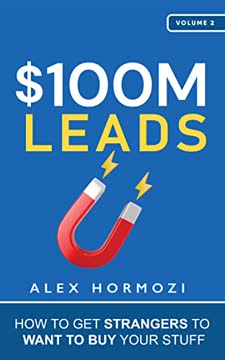
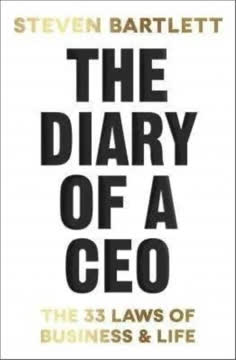



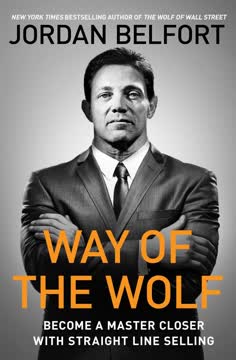
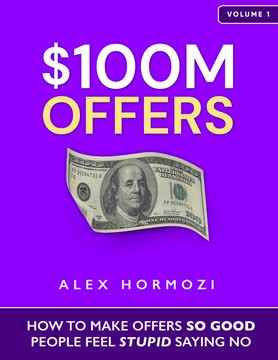
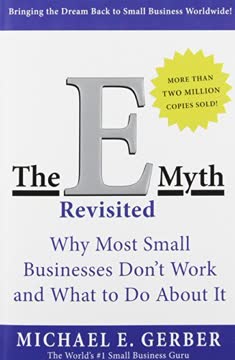
Download PDF
Download EPUB
.epub digital book format is ideal for reading ebooks on phones, tablets, and e-readers.
